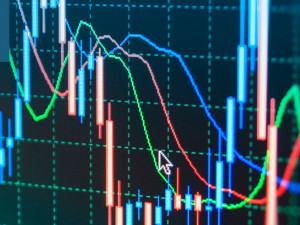
Soaring inflation to determine hike
Morning mid-market rates – The majors
25th July: Highlights
- Key workers to disrupt new leader’s plans
- Economy on a knife edge as FOMC meets for another hike
- Recession confirmed a day after a fifty-point hike
GBP – Fifty Basis point hikes are still not enough
It is as likely that this election will be decided on personality as it will on policy.
Truss is the more traditionally Conservative candidate, while Sunak will lean heavily on his record as Chancellor through one of the most difficult economic climates in a generation.
Former Johnson adviser Dominic Cummings took a swipe at Truss on Friday, taking to Twitter to label her a truly useless remainer, who has done nothing in Government other than gabble with hacks.
Output in the UK services sector which makes up around 80% of GDP fell in July, but managed to remain in expansion. UK services PMI came in at 53.3 which was above most analysts’ expectations. Manufacturing also managed to stay above the 50 level which separates contraction and expansion, coming in at 52.2.
It remains to be seen if bobbing along the bottom can remain through the summer despite the outside influences of Brexit and raging inflation.
The price of petrol has begun to fall, not by any significant degree, but it is moving in the right direction. An apt analogy is that the price went up in the lift, but as often happens is coming down via the staircase.
Although the petrol price will have an effect on the CPI figure for this month, the 9.4% rise reported for June means that double figures are now likely to be seen.
Rishi Sunak has pledged to wait until inflation is under control before he tackles his goal of lowering taxation.
The recommended pay award to two and a half million public service workers, the majority of whom were labelled heroes during the Pandemic, since they were the key workers who kept hospitals and other vital services operating, has been dismissed out of hand by their unions.
The offer of 5% is well below the level of inflation, but the government has countered that an inflation busting increase would simply add to the level of inflation.
The new leader is likely to face significant industrial action almost as she or he takes office.
Last week, the pound managed to stage something of a rally versus the dollar. It climbed to a high of 1.2064, closing at 1.2006.
Recommend our services and earn up to £75 per successful referral
USD – Another hike this week as recession concerns remain
Many commented that it was between 2.25% and 2.50%. With another seventy-five-point hike expected this week, the Fed Funds rate will reach 2.50%.
That means that there are certain to be questions to Jerome Powell at his press conference following the meeting about the Fed’s future intentions.
This week’s meeting will not only decide on the size of the hike, there will also be the release of the Central Bank’s economic projections for the next three months.
Further hawkish sentiment will add impetus to the dollar, which has been correcting recently, but any hint of a pause and review may see the correction deepen.
The Chief Economist at S&P which produces activity statistics for the economy commented on Friday that they believe that the economy is slowing at its fastest rate since 2008.
S&P’s U.S. Manufacturing PMI slowed to its lowest level in July falling to 52.3 from 52.9 in June.
New orders fell and the employment register in the manufacturing sector moderated.
Coupled with data released this month for the housing market, there are signs emerging that the Fed’s actions may be starting to have an effect and may bring about some circumspection.
Services output is already in contraction, falling to 47 in the latest period. While services are not as critical in the U.S. as they are in other G7 economies, this is still a worrying trend.
There continue to be disagreement between analysts about the short-term direction for the economy, but both sides agree that it is currently on a knife edge with the Fed still concerned about bringing inflation down.
The dollar index remains in a shallow correction, although this ‘FOMC meeting may provide a clue to its medium-term direction. With no meeting following this week until late September, the picture of the economy may look significantly different by then.
Last week the dollar index fell to a low of 106.11, closing at 106.54.
EUR – Germany and Eurozone see manufacturing output contract
A more instant gauge is a contraction in the monthly purchasing managers indexes which provide clear guidance.
On Friday, data was released which showed that output had contracted in July in Germany to 48 from 51.3 in June. It was a similar picture for the wider Eurozone, with output collapsing to 49.4 from 52.
While no one expected positive data, the contraction was not expected.
Having hikes rates the previous day, it is a testament to the power being exerted by the more hawkish members of the ECB Governing Council that despite the fact that they would have been aware of the contraction having been given advance warning, they managed to persuade the Council to hike by the larger of the two possibilities.
This means that Christine Lagarde appears to have been convinced of the detrimental effect that high and rising inflation is having on the economy.
It remains hard to say just how raising interest rates to slow demand will have on headline inflation, the majority of which is rooted in supply.
There was some good news for the Eurozone over the weekend with the signing of an agreement between Russia and Ukraine that will allow grain shipments to leave Ukrainian port without hindrance from Russian shelling.
The agreement was immediately brought into question as two shells exploded in the port city of Odessa. Russia denied having fired on the city.
The new tool, labelled TPI, that the ECB has created to narrow the gap in spread between German bond rates and those of the more indebted nations of the Eurozone has received widespread support, even if that support is lukewarm.
Spanish Economy Minister Nadia Maria Calvino labelled the measures as adequate. As is often the case, the devil is in the detail and one clause in the agreement requires compliance with the European Union’s fiscal criteria.
This could be a bone of contention most relied upon by Germany.
The euro remains under pressure, but has received some relief as the dollar goes through a period of correction. Last week, it scrambled to a high of 1.0278, but the top may not be too much above that level. It closes at 1.0214.

About Alan Hill
Alan has been involved in the FX market for more than 25 years and brings a wealth of experience to his content. His knowledge has been gained while trading through some of the most volatile periods of recent history. His commentary relies on an understanding of past events and how they will affect future market performance.”



